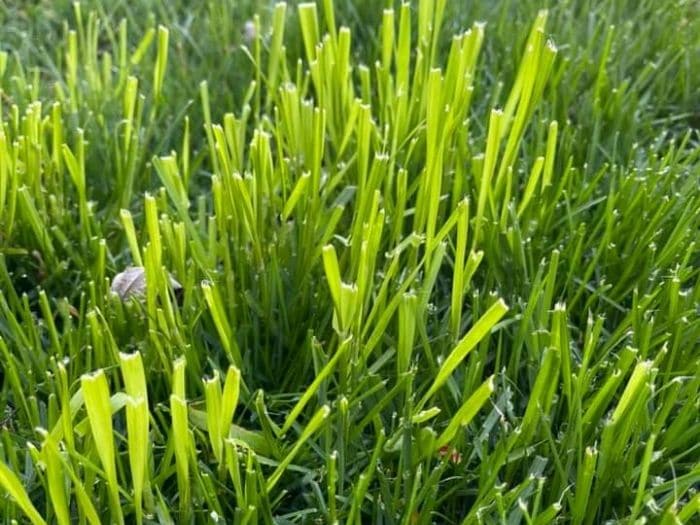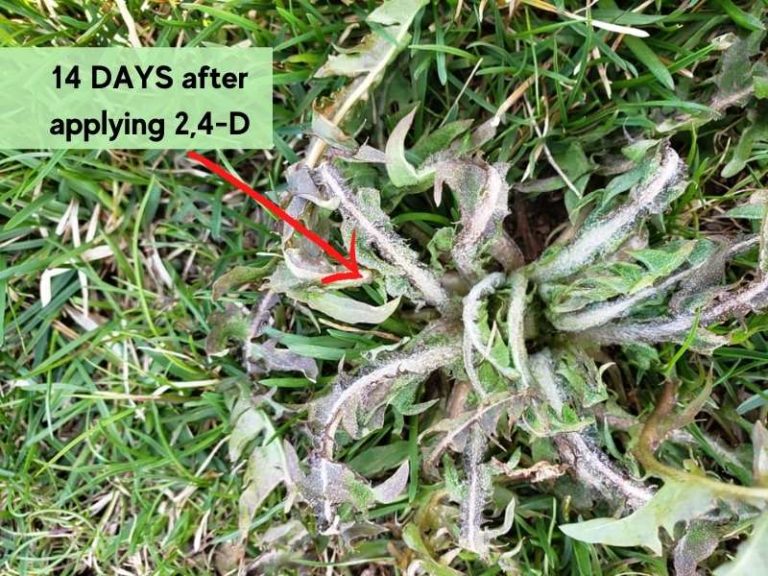Torpedo Grass vs. Bermuda Grass: Identification + Differences
Torpedo and Bermuda grasses are tough-to-kill invasive grassy weeds that can attack lawns and take over them. You want to make sure you can identify them correctly in order to control them effectively.
Both torpedo and common Bermuda grasses are perennial invasive grasses with deep fibrous root systems that can grow and extend to more expansive areas even below nearby concrete sidewalks or driveways, making it very difficult to kill them in one season.
How to identify torpedo grass
Torpedograss (Panicum repens) has sharp pointed leaf tips, thus its name. It has 10 inches long leaves with hairs on the upper surface. The leaves can be linear, folded, or flat with a white wax-like coating. Torpedo grass has a ligule with a fringe of hairs on its upper surface. Another identifying feature is the deep fibrous root system.
How to identify wild Bermuda grass
There are various species of Bermudagrass, and the most common one is Cynodon dactylon. The identifying features of this species are coarse-textured leaves and visible stolons above the ground that make Bermuda grass spread fast. It has a ligule with hairs at the collar region. Its leaves can be hairy or sparsely-haired with round, smooth, or spillted hairy leaf sheaths of between 2- 5 mm tall.
The leaf blades are long, ranging from 2 to 7 inches, 1.5-5 mm wide, and are folded or rounded at the buds.
Bermudagrass has a deep fibrous root system which is white when young but brown or yellow when mature. If you note such features and the fastest-growing turf on your lawn, that’s Bermuda grass.
Torpedo grass vs. Bermuda grass- the differences
Bermuda and torpedo are from different genus and species though they share a joint family of grasses called Poaceae. They are both perennial grasses and stubborn weeds, and with improper identification, you can easily interchange them. Such misidentifications lead to improperly applied control measures, endangering your lawn’s turf.
1. Growing conditions
Toperdograss grows in disturbed, poorly drained soils, while Bermuda grass thrives in all types of well-drained moist soils.
Torpedo grass thrives well near or in shallow water where its rhizomes may float or hang in the water to reproduce new shoots and roots, spreading to adjacent areas. On the other hand, Bermuda grass requires any soil to thrive, provided the soil is well-drained and moist.
While torpedo grass requires partial shade to grow, Bermuda grass does not tolerate shade and thrives in full sun exposure.
Torpedoggrass needs partial sun exposure and can stand lesser droughts. Meanwhile, Bermuda grass needs total sun exposure and remains active in warmer temperatures but dormant in winter. Bermuda grass can stand severe drought, high salt levels, and low humidity.
Due to its resilience, bermudagrass is hard to control. It becomes dormant in unfavorable conditions such as winter but regrows in favorable conditions when spring begins.
2. Leaf structure
Torpedo grass has long, folded, linear, or flat leaves while bermudagrass leaves are short, flat, or folded lengthwise.
Torpedo leaves are 10 inches long, folded, linear, or flat. The leaves have hairs on the upper surface with a white wax-like coating. On the other hand, bermudagrass has short leaves between 2-7 inches that are flat or folded lengthwise. The leaf blades are rounded or tucked in the buds.
Torpedo has hairy leaf sheaths while Bermudagrass leaf sheaths can be smooth on both surfaces or with sparse hairs depending on the variety.
3. Reproduction
Torpedo grass reproduces through rhizomes, while Bermuda grass reproduces through seeds, stolons, and rhizomes.
Torpedo grass reproduces through its rhizomes. The rhizomes either expand or split into fragments, regrowing new shoots and roots from the soil.
On the other hand, Bermudagrass reproduces by producing new seeds, dispersed to new lawn areas or gardens by pets, winds, or humans. It also has rhizomes and above–ground stolons.
These rhizomes rot at the nodes reproducing new shoots. Because Bermuda grass reproduces through seeds and rhizomes, it will spread faster and aggressively if it invades your lawn area. Underground rhizomes make removing them from the lawn challenging and need multiple consistent control measures.
4. Rhizomes
Torpedo grass has long creeping rhizomes, while bermudagrass can have shallow or deep rhizomes.
Torpedo grass has long creeping rhizomes with sharp tips and hangs shallowly to produce new shoots or roots at the nodes. Conversely, Bermudagrass can have shallow rhizomes of between 1 and 6 inches when it grows in disturbed soils. However, when bermudagrass grows in tilled or spaded soils, its rhizomes extend more than 6 inches deep into the soil.
The simplified table below shows significant differences between torpedo grass and Bermuda grass.
| Torpedograss | Bermudagrass |
| It thrives in disturbed, poorly drained soils. | It thrives in well-drained moist soils. |
| It requires partial shade exposure. | It requires total sun exposure. |
| Has folded, linear, or flat leaves | Has flat or folded lengthwise leaves |
| Has hairy leaf sheaths | Has smooth or sparsely-haired leaf sheaths |
| Reproduces through rhizomes | Reproduces through seeds, stolons, and underground rhizomes |
| Has long creeping rhizomes | Rhizomes can be deep or shallow, depending on soil nature. |
Torpedo grass control
Torpedograss is among the most challenging weeds to remove if it invades your lawn, garden, or yard. This is because it’s a perennial plant that will always regrow if uncontrolled consistently after one or two years. Torpedo grass reproduces new shoots and roots through underground rhizomes.
If part of these rhizomes remains in the soil, it will regrow over time when conditions are viable. Thus, when getting rid of this grass from your lawn or garden, you want to use a method that will ultimately kill the rhizomes to remove the weed altogether.
Using a non-selective systemic glyphosate herbicide will suppress the weed with multiple timely applications.
Glysophate herbicides are non-selective; if applied to lawn or garden, they can kill or damage surrounding turfs if they spill on them. But they are very effective because they will kill the entire weed system.
You will need a glyphosate herbicide, a spray bottle with a tiny nozzle, and gloves to kill torpedo grass.
Here’s how to kill torpedo grass using glyphosate:
- Measure 2lbs of glyphosate herbicide per gallon of water in a spray tank and close tightly.
- Spot spray the grassy weed, ensuring you spray it on the leaves. Avoid spraying the herbicide on nearby turf because it will kill them.
- Remove brown spots of dead weeds and dispose of them.
- Reapply the glyphosate herbicide 4-6 weeks after the first application, and reapply for the third time.
- Replant new grass seeds on the bare spots or replace them with new uncontaminated sod.
How to control bermudagrass
Bermudagrass is tougher to remove from unwanted spots in lawns because it’s a hardy perennial grass that grows aggressively faster than other grass types, thus taking over a lawn. Use a non-selective systemic glyphosate herbicide to control Bermuda grass from an already established lawn.
Systemic glyphosate herbicide will kill the entire grass if applied multiple times consistently. Make the first application when the grass is actively growing in late spring, and the optimum temperature is 80oF. Since the glyphosate herbicide is non-selective, spot-spray Bermuda grass to avoid killing nearby turfgrasses.
References
- Richard L. Duble, Turfgrass Specialist Texas Cooperative Extension: Bermudagrass.
University of Florida: Panicum repens.



